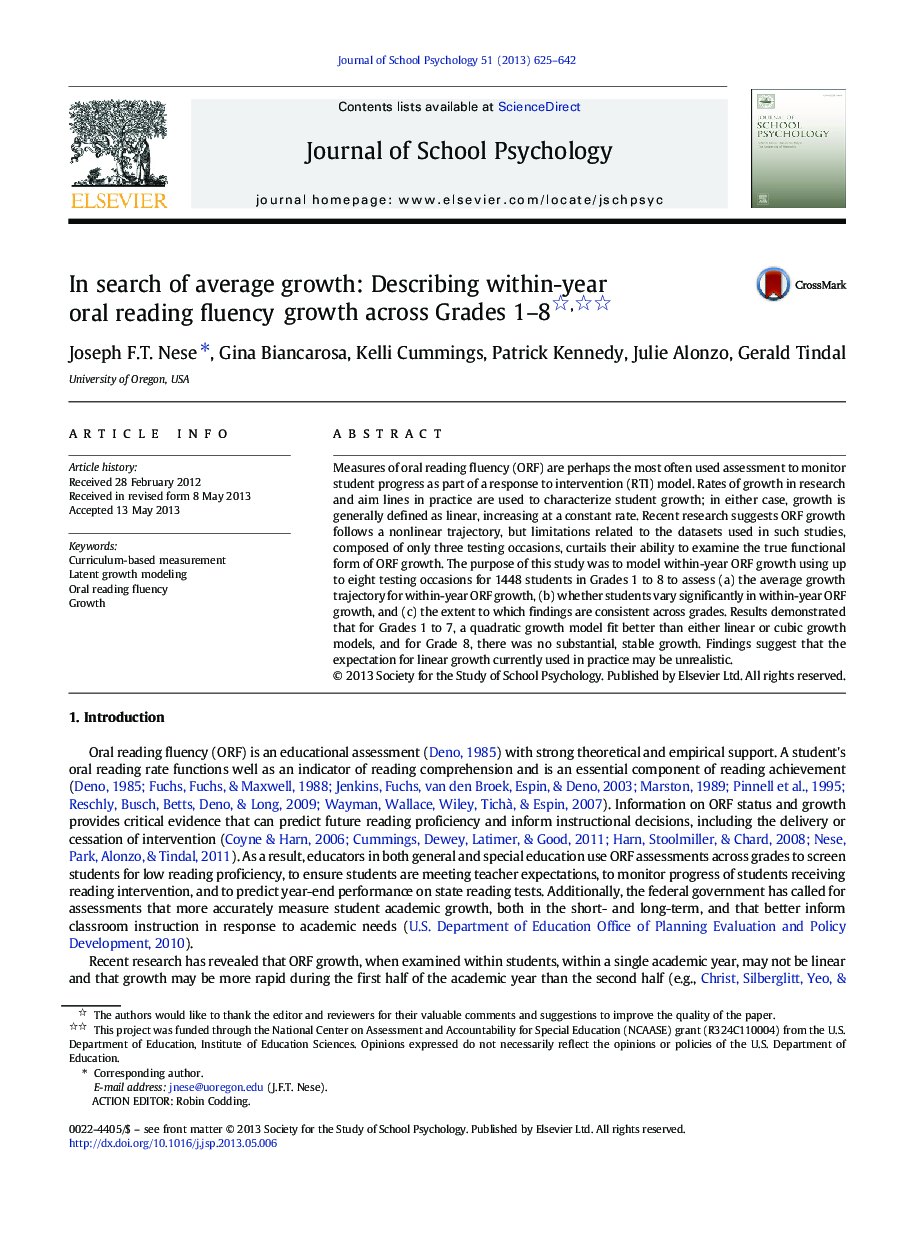| Article ID | Journal | Published Year | Pages | File Type |
|---|---|---|---|---|
| 363614 | Journal of School Psychology | 2013 | 18 Pages |
Measures of oral reading fluency (ORF) are perhaps the most often used assessment to monitor student progress as part of a response to intervention (RTI) model. Rates of growth in research and aim lines in practice are used to characterize student growth; in either case, growth is generally defined as linear, increasing at a constant rate. Recent research suggests ORF growth follows a nonlinear trajectory, but limitations related to the datasets used in such studies, composed of only three testing occasions, curtails their ability to examine the true functional form of ORF growth. The purpose of this study was to model within-year ORF growth using up to eight testing occasions for 1448 students in Grades 1 to 8 to assess (a) the average growth trajectory for within-year ORF growth, (b) whether students vary significantly in within-year ORF growth, and (c) the extent to which findings are consistent across grades. Results demonstrated that for Grades 1 to 7, a quadratic growth model fit better than either linear or cubic growth models, and for Grade 8, there was no substantial, stable growth. Findings suggest that the expectation for linear growth currently used in practice may be unrealistic.
